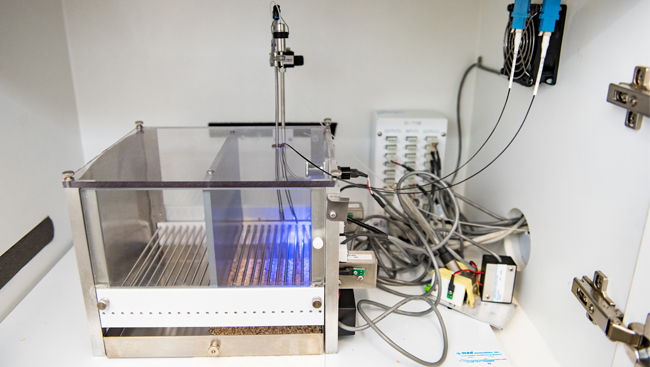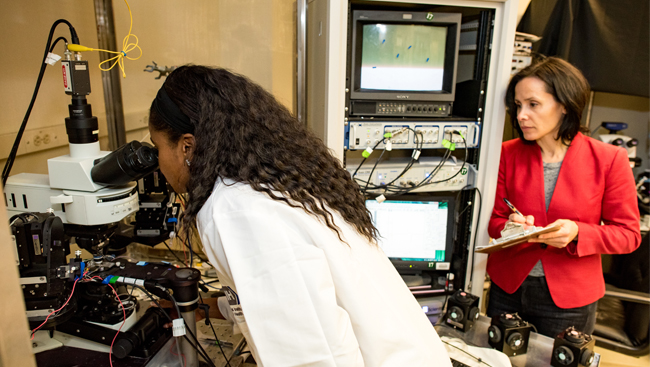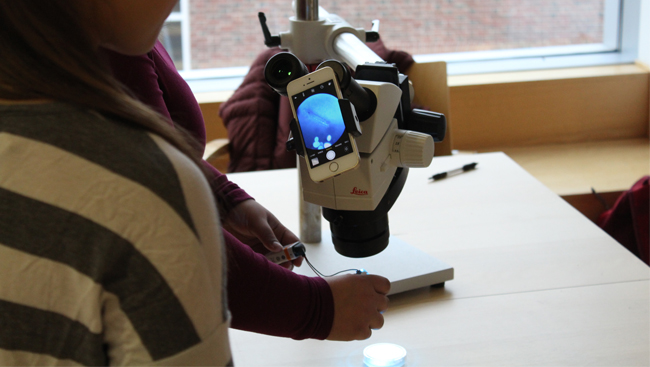Module 4: In Vivo Applications, Nuts, and Bolts
- Featured in:
- SfN’s Optogenetics Training Series
Learn some of the common uses of optogenetics in an in vivo setting, as well as basic implementation strategies.
 Lisa Gunaydin |
 D. Paola Calderon |
 Aryn Gittis |
After reviewing the materials in Module 4, you should be able to:
- Describe several types of in vivo experiments in which optogenetics can be useful.
- Describe basic experimental design used for in vivo optogenetic studies, including choice of optimal tools, stimulation parameters, and controls.
- Identify some common potential confounds in optogenetic stimulation.
- Describe key ways to validate optogenetic tools for in vivo experiments.
Visit the Community forum for all eight modules to share your insights and best practices, ask questions, and engage with other training series’ participants.
Complete this short survey to provide valuable feedback about Module 4 to SfN and the series faculty.
-
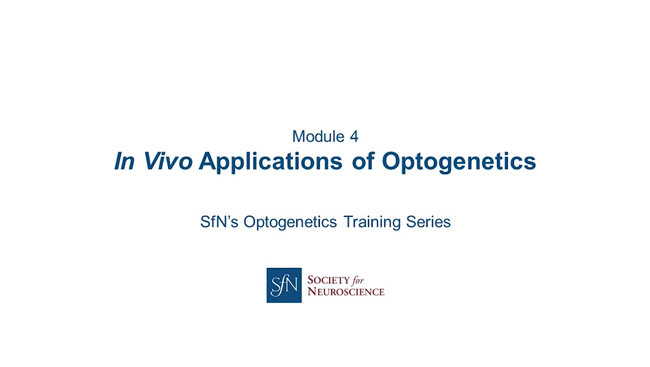 Module 4A: In Vivo Applications of Optogenetics
Module 4A: In Vivo Applications of OptogeneticsIn this presentation, Lisa Gunaydin will introduce some of the common uses of optogenetics in an in vivo setting. Specifically, Gunaydin will:
- Describe different purposes of optogenetics in vivo, such as to manipulate behavior and test functional connectivity.
- Introduce the role of combining optogenetics with other methods, such as neural recordings or imaging.
- Introduce translational applications of optogenetics to develop new therapeutic paradigms.
After watching this presentation, you should be able to describe several types of in vivo experiments in which optogenetics can be useful.
-
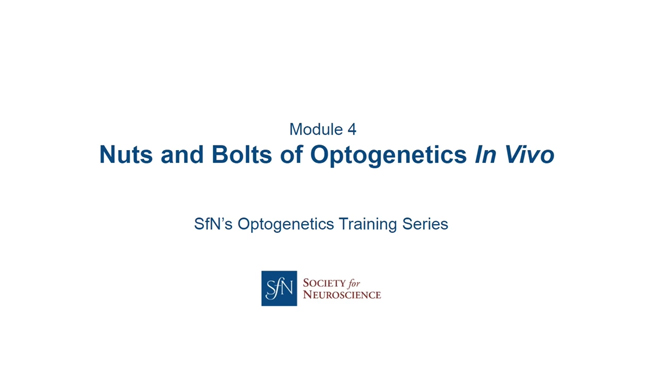 Module 4B: Nuts and Bolts of In Vivo Optogenetics Experiments
Module 4B: Nuts and Bolts of In Vivo Optogenetics ExperimentsIn this presentation, D. Paola Calderon and Aryn Gittis will introduce some of the common uses of optogenetics in an in vivo setting. Specifically, Calderon and Gittis will:
- Identify experimental settings adequate to establish a causal relationship between neuronal populations and behavior.
- Describe experimental settings required for using optogenetics to study neuronal circuits during in vivo recordings.
After watching this presentation, you should be able to describe the essential details to design and perform an in vivo optogenetics experiment using acute and chronic preparations.
-
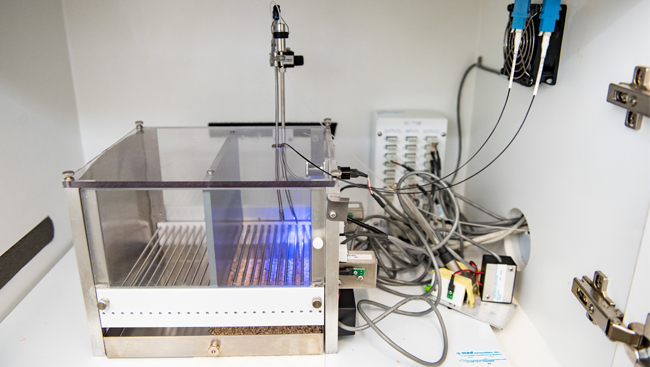 Module 4C: Supporting Resources for In Vivo Applications, Nuts and Bolts
Module 4C: Supporting Resources for In Vivo Applications, Nuts and BoltsThe resources here were selected by Lisa Gunaydin, D. Paola Calderon, and Aryn Gittis, faculty from Module 4 of SfN’s Optogenetics Training Series. These resources supplement their presentations, In Vivo Applications of Optogenetics and Nuts and Bolts of In Vivo Optogenetic Experiments.
Use these resources to better understand appropriate applications and key concepts of designing and interpreting optogenetics experiments using in vivo preparations.




